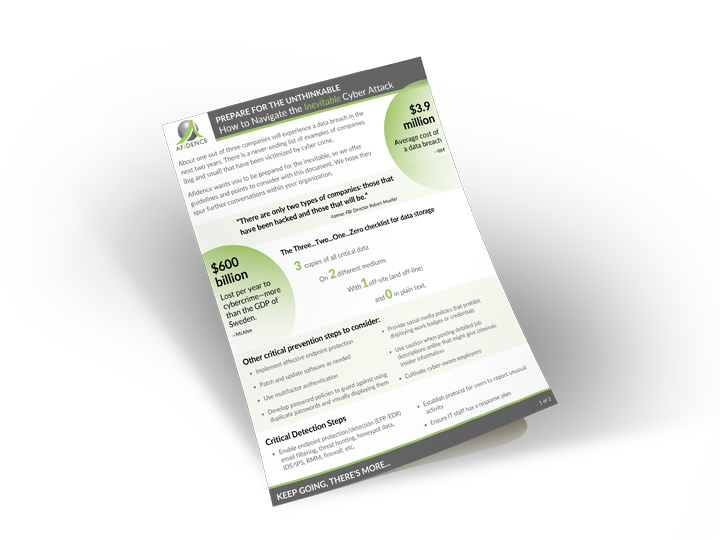Active directory (AD) is a database that connects your organization’s users with the resources they need in order to do their work. It is the backbone of many organizations as it manages user access, authentication and permissions. Consistent effort is needed to keep your active directory secure and running efficiently. These are our top four tips to become an active directory pro.
Active Directory Tip #1: Regularly Audit and Monitor
It is important to regularly audit your active directory to keep your network healthy. Auditing is more than just collecting data; it involves strategic monitoring and analysis of activity. Auditing your AD helps you:
- Reduce security risk: Groups that are deeply nested can create vulnerability in your security. Auditing can make these security risks known so they can be fixed before any issues arise.
- Maintain compliance: Meeting compliance regulations often means conducting audits and assessing where you might be falling short on requirements.
- Monitor system status: Regular auditing helps you monitor your AD, which allows you to find and handle any potential issues before they arise.
There are two tools we recommend using: EventViewer is a built-in Windows tool that allows you to view security and system events, and AD Audit Plus has advanced features and centralized reporting.
Monitoring and reviewing of logs needs to be done at regular intervals. The intervals will depend on the size of your company.
It is imperative to set up alerts for any critical changes. If a bad actor makes its way into your system and changes things, you’ll know the instant it happens.
AD auditing is extremely important, but it can be automated. This helps ensure you aren’t missing things that are happening in real time. Automated reporting often results in faster response time and helps you mitigate risks much more quickly.
Active Directory Tip #2: Implement Strong Access Control and Permissions
Users should only have access to the resources and information that are absolutely necessary to their job functions. This principle of least privilege can be used as a guide to effective access control and permissions for your active directory.
Another way to manage access and permissions is to assign permissions to groups instead of individuals. The groups should be based on their roles. This reduces the risk for human error and makes managing control a smoother process.
To make it easier to understand and manage permissions use clear and descriptive names. Indicate the resources of the users they control.
Regular reviews are essential to ensure strong access controls and permissions in your AD. As part of your audit you should review and update group memberships, especially when somebody leaves the company or a promotion puts them in another group.
Active Directory Tip #3: Keep Your AD Updated and Secure
One of the most important ways to protect your active directory is to apply patches and updates as soon as possible. Patches and software updates come with security upgrades and reduce vulnerabilities found by the software company.
To ensure your all domain controllers and AD services are up to date, we recommend the following:
- Prioritize updates: These give the latest security upgrades in addition to new features or performance fixes.
- Strategize for success: Create a plan that ensures all domain controllers and active directory related services are updated promptly. Deployment tools are one way to achieve efficient updates.
- Multiple domain controllers: There should be at least two domain controllers per domain in the event of an outage.
- Segmentation: Domain controllers should not be on the same network to limit access. Firewalls should be maintained to restrict traffic.
- Physical security: To prevent internal bad actors, domain controllers need to be physically secure as well.
- Recovery and monitoring: Back up your domain controllers on a regular basis as part of a disaster recovery plan. In addition, ensure there is 24/7 monitoring.
- Secure communication: Implement multi-factor authentication and LDAP to add additional layers of security.
- Refine policies: On a regular basis, review and update your active directory policies to stay ahead of threats.
Active Directory Tip #4: Active Directory Performance
Want a smoother user experience? Then you’ll need to ensure your AD is well-optimized. Configure your sites and subnets correctly to optimize replication traffic. From there you will want to fine-tune replication intervals and schedules based on your organization’s bandwidth and usage patterns. Utilizing read-only domain controllers reduces WAN traffic in remote locations. Lastly, cleaning up inactive accounts reduces the size of your database, allowing query performance to improve.
Ready to Streamline Your Active Directory?
A well-run active directory is the foundation for your organization’s IT infrastructure. We know it can be difficult to transform your AD on your own if you don’t have enough bandwidth in your IT department. Schedule a call with us to learn how our IT staff augmentation can turn your active directory from a mess into a masterpiece.

